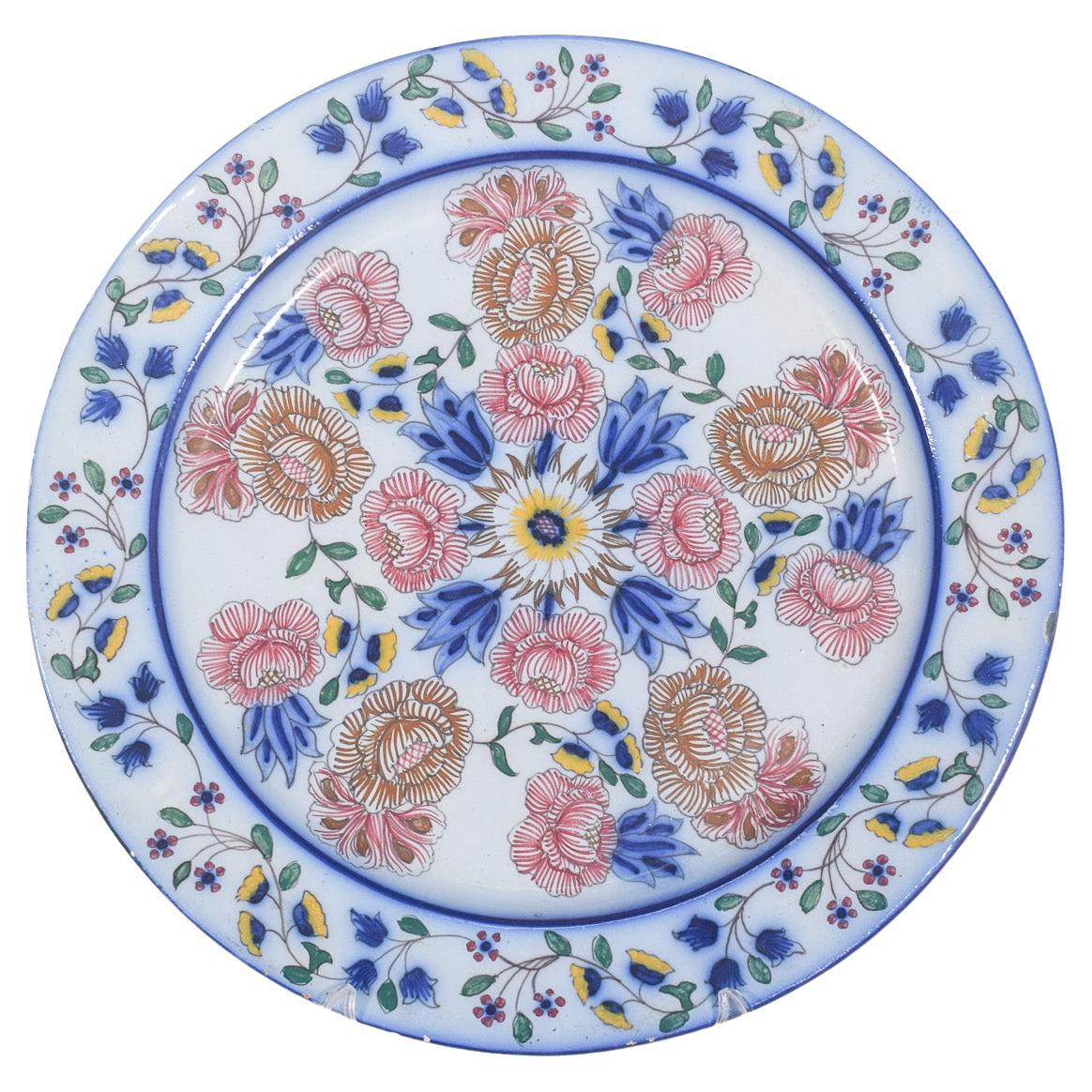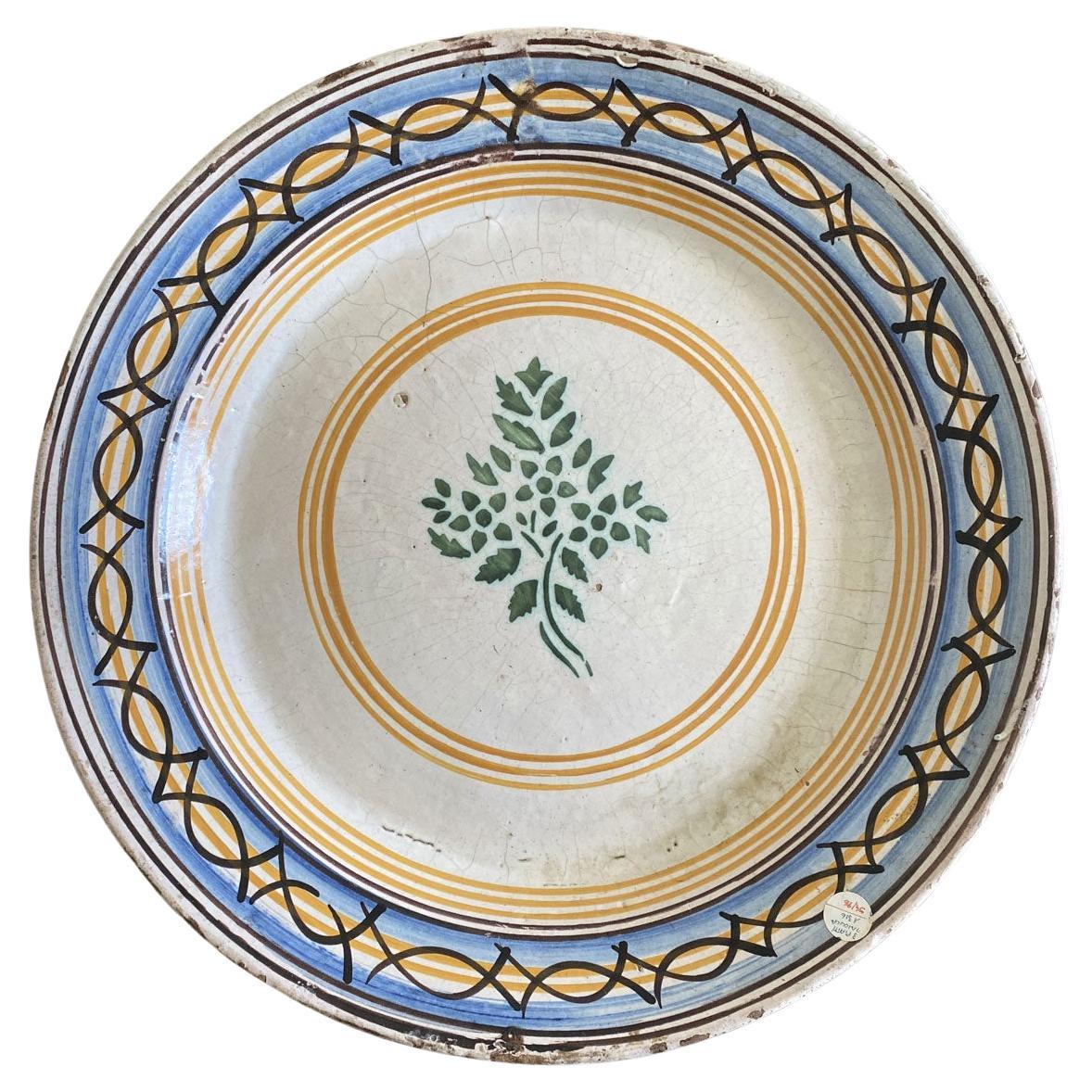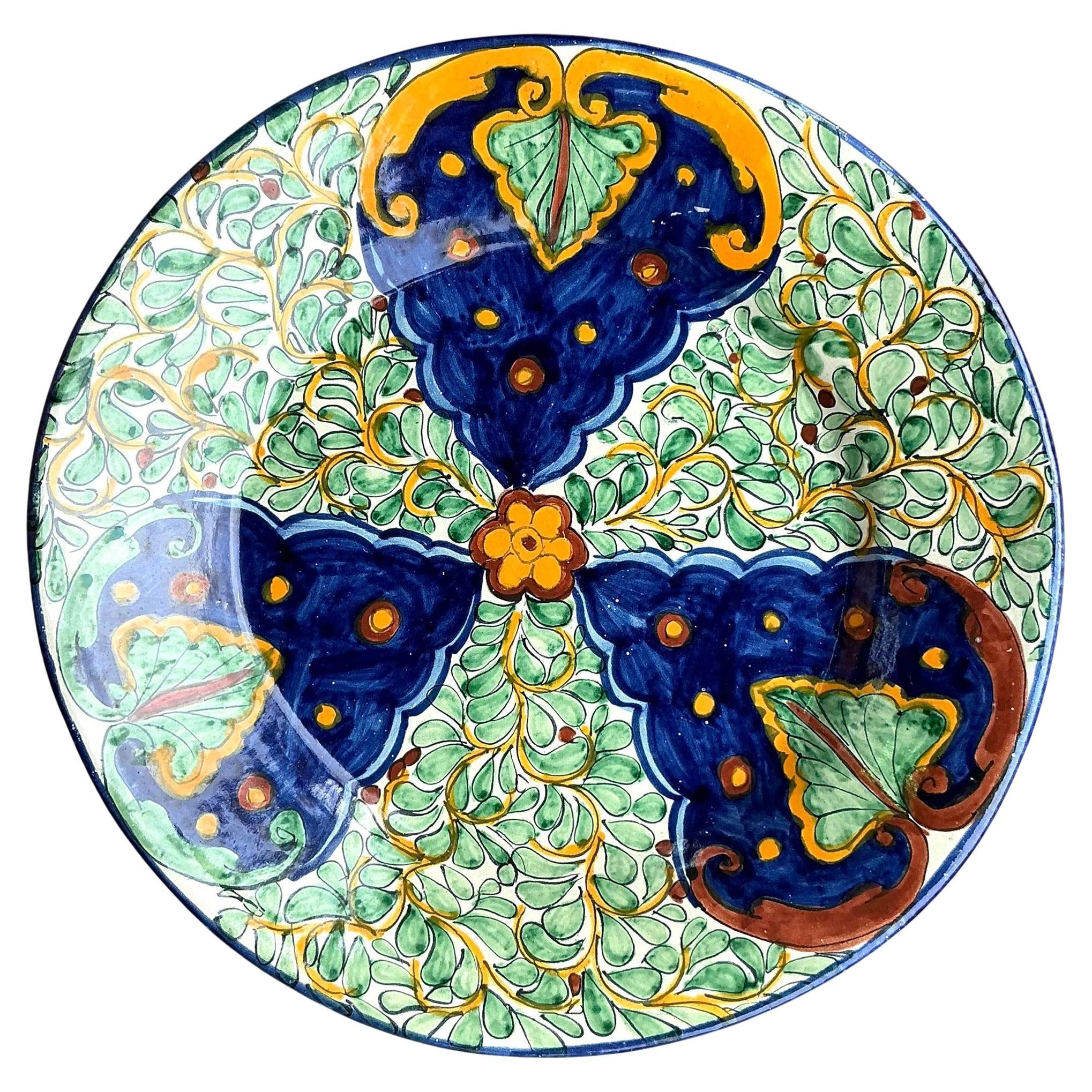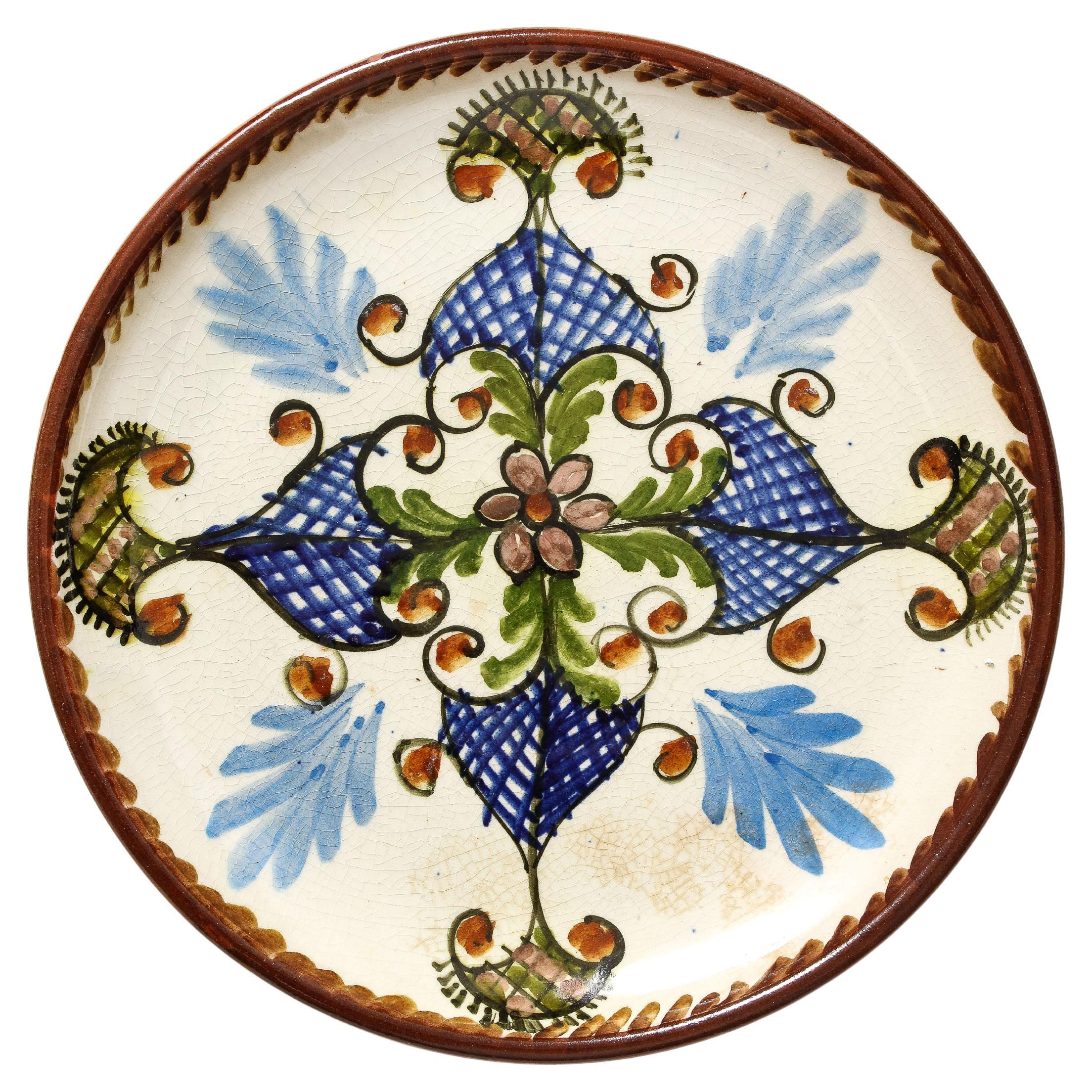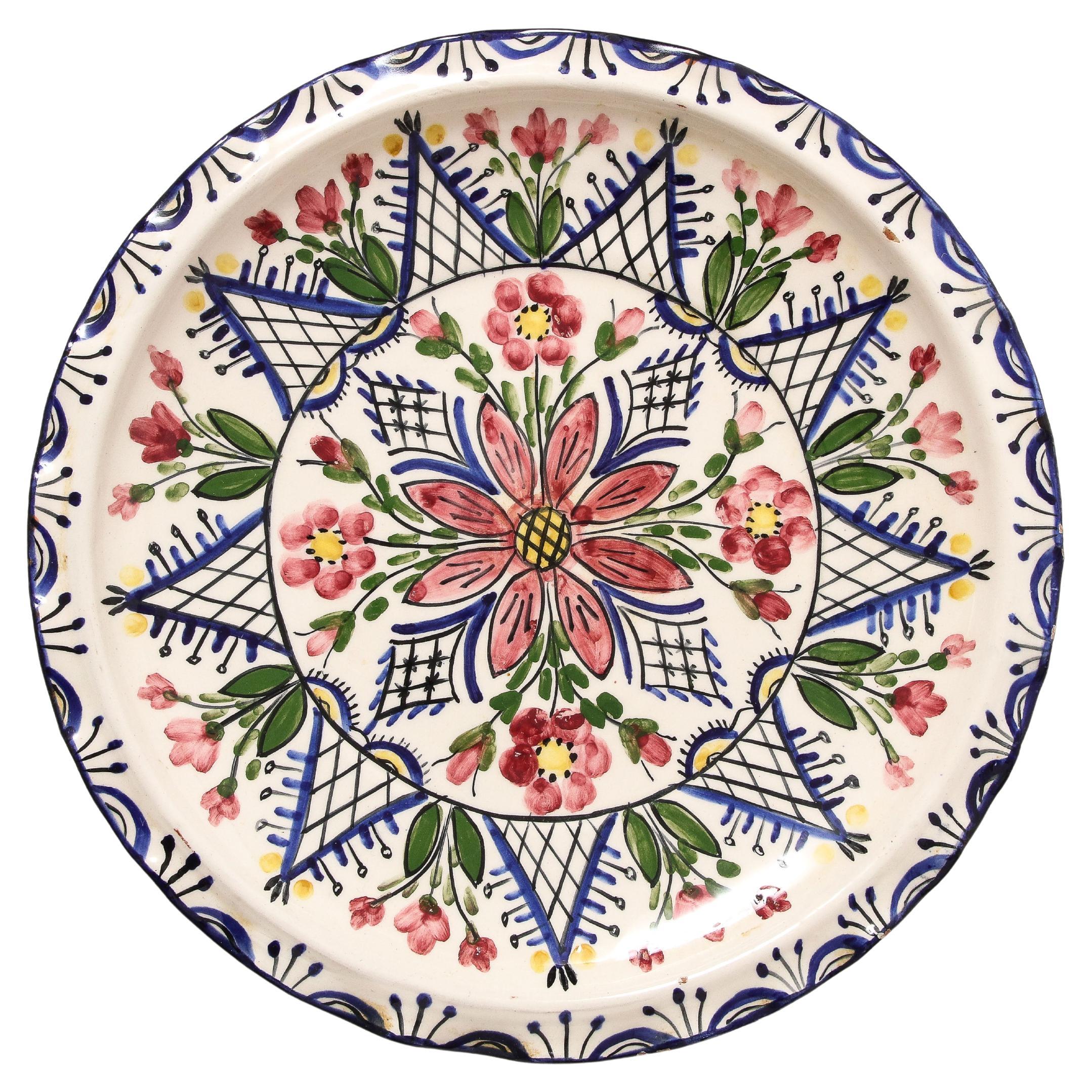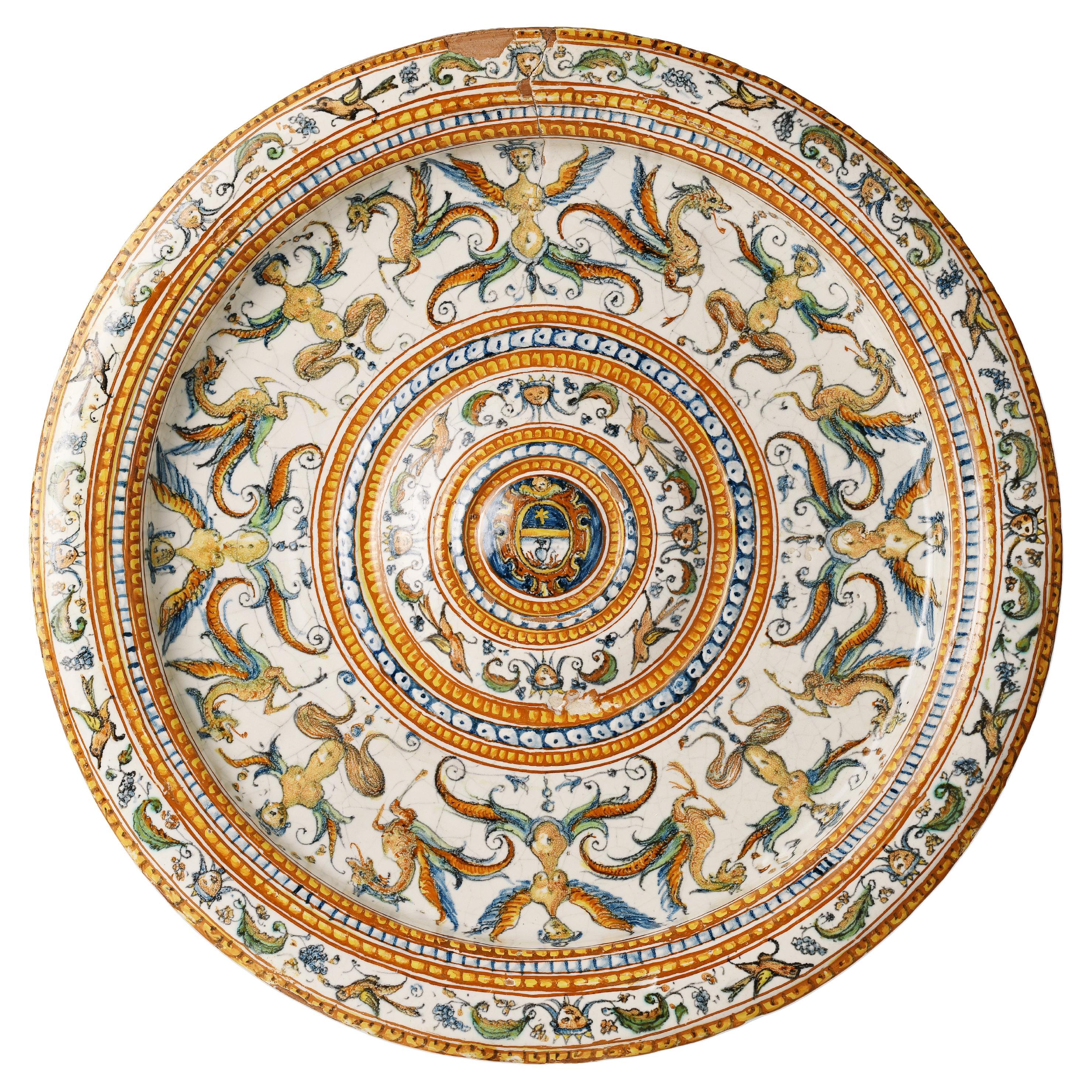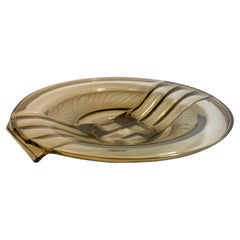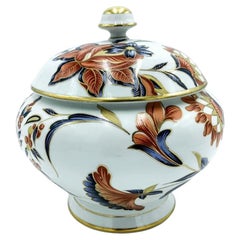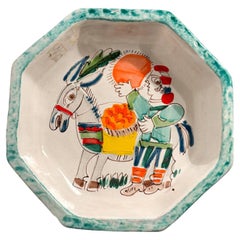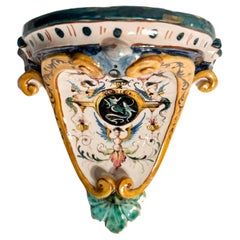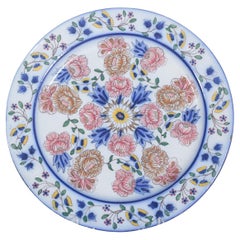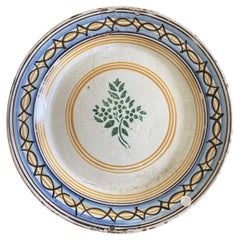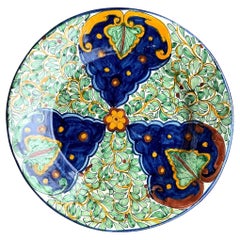Items Similar to San Gimignano Italian Ceramic Plate from the 1970s
Want more images or videos?
Request additional images or videos from the seller
1 of 5
San Gimignano Italian Ceramic Plate from the 1970s
$329.99
$412.4920% Off
£244.29
£305.3720% Off
€276
€34520% Off
CA$456.62
CA$570.7820% Off
A$503.42
A$629.2720% Off
CHF 263.37
CHF 329.2120% Off
MX$6,175.99
MX$7,719.9920% Off
NOK 3,315.33
NOK 4,144.1620% Off
SEK 3,100.35
SEK 3,875.4420% Off
DKK 2,102.40
DKK 2,62820% Off
About the Item
San Giminiano Italian ceramic plate, handprinted and realized in the 1970s.
The plate pattern and decoration is typical of the centre of Italy, in particular Tuscany manufacturing and style.
Conditions are really good, only minor fading due to time.
Measures: Ø cm 48 Ø cm 48.
- Dimensions:Height: 1.58 in (4 cm)Width: 18.9 in (48 cm)Depth: 18.9 in (48 cm)
- Style:Mid-Century Modern (Of the Period)
- Materials and Techniques:
- Place of Origin:
- Period:
- Date of Manufacture:circa 1970
- Condition:Minor fading.
- Seller Location:Milano, IT
- Reference Number:1stDibs: LU7537232229102
About the Seller
5.0
Vetted Professional Seller
Every seller passes strict standards for authenticity and reliability
Established in 1990
1stDibs seller since 2022
39 sales on 1stDibs
Typical response time: 3 hours
- ShippingRetrieving quote...Shipping from: Milano, Italy
- Return Policy
Authenticity Guarantee
In the unlikely event there’s an issue with an item’s authenticity, contact us within 1 year for a full refund. DetailsMoney-Back Guarantee
If your item is not as described, is damaged in transit, or does not arrive, contact us within 7 days for a full refund. Details24-Hour Cancellation
You have a 24-hour grace period in which to reconsider your purchase, with no questions asked.Vetted Professional Sellers
Our world-class sellers must adhere to strict standards for service and quality, maintaining the integrity of our listings.Price-Match Guarantee
If you find that a seller listed the same item for a lower price elsewhere, we’ll match it.Trusted Global Delivery
Our best-in-class carrier network provides specialized shipping options worldwide, including custom delivery.More From This Seller
View AllItalian Decò Glass Centerpiece Plate from the 30s
Located in Milano, MI
Decò glass centerpiece plate, made in the 1930s
Ø cm 31 h cm 7
The plate is in good conditions, only minor fading is present at the top, due to time. Additional pictures on request.
Category
Vintage 1930s Italian Art Deco Decorative Bowls
Materials
Glass
Potiche in Limoges Porcelain, 1960
By Limoges
Located in Milano, MI
Limoges porcelain pottery, 1960s
Measures: Ø cm 20 H cm 20
The Limoges porcelain dates back to the 60s-70s of the seventeenth century, when a deposit of kaolin was discovered i...
Category
Vintage 1960s French Mid-Century Modern Centerpieces
Materials
Porcelain
$252 Sale Price
20% Off
Hand Painted Ceramic Bowl by Giovanni De Simone 1970s
By Giovanni de Simone
Located in Milano, MI
Hand-painted ceramic bowl by Giovanni De Simone, made in the 1970s
Ø cm 22 h cm 5
Ceramiche De Simone represents excellence in Sicilian craftsmanship, with a history rooted in the ...
Category
Vintage 1970s Italian Mid-Century Modern Garniture
Materials
Ceramic
Hand Painted Early 20th Century Faenza Ceramic Shelf
By Ceramiche Artistiche Faenza
Located in Milano, MI
Hand-painted Faenza ceramic wall shelf, made in the early 20th century
Ø cm 19 Ø cm 14 h cm 21
Antique ceramic shelves are fascinating objects that combine functionality with the ...
Category
Vintage 1920s Italian Renaissance Revival Shelves and Wall Cabinets
Materials
Ceramic
Caravaggio Cup Murano Glass Centerpiece by Barovier & Toso from the 1980s
By Barovier&Toso
Located in Milano, MI
Centerpiece cup in very fine blue Murano glass, made in inspiration of the Caravaggio cup by Barovier and Toso, in the 1980s
Ø 22 cm h 17 cm
Barovier & Toso is a glass factory, kno...
Category
Vintage 1980s Italian Romantic Centerpieces
Materials
Murano Glass
$1,711 Sale Price
20% Off
Ceramic Bowl by Ceramiche Batignani from the 1950s
By Ceramiche Batignani
Located in Milano, MI
Ceramic bowl made by Ceramiche Batignani in the 1950s
Ø cm 15 Ø cm 12 h cm 6
Batignani Ceramiche is a name synonymous with excellence in Italian ceramic art...
Category
Vintage 1950s Italian Mid-Century Modern Decorative Bowls
Materials
Ceramic
$296 Sale Price
20% Off
You May Also Like
Portuguese Faience Plate from Coimbra Polychrome Decoration
Located in Lisboa, Lisboa
Dish in Portuguese Estatuária faience from Coimbra. Polychrome decoration with a colourful floral pattern inspired by traditional handmade ceramics. The dish has a white background w...
Category
Mid-20th Century Portuguese Mid-Century Modern Ceramics
Materials
Earthenware
Italy Late 18th Century Ceramic Dish or Decorative Centerpiece
Located in Brescia, IT
This is an antique piece produced in Tuscany at the end of the 18th Century following the Rustic style. The expression of the antique craftmenships of the Tuscany artisans is well s...
Category
Antique Late 18th Century Italian Rustic Ceramics
Materials
Ceramic
Vintage Bon Hand Painted Glazed Ceramic Platter
Located in West Palm Beach, FL
Add a stunning focal point to your table or wall decor with this Vintage Boho Hand-Painted Glazed Ceramic Platter. Featuring intricate, hand-painted patterns in vibrant colors, this ...
Category
Late 20th Century American Rustic Platters and Serveware
Materials
Ceramic
Glazed Ceramic Decorative Plate, Greece, 20th C
Located in New York City, NY
Decorative glazed ceramic plate. Hand-painted floral pattern, created in Greece in the early 20th C.
Category
20th Century Greek Dinner Plates
Materials
Ceramic
Glazed Ceramic Decorative Plate, Greece, 20th C
Located in New York City, NY
Decorative glazed ceramic plate. Hand-painted floral pattern, created in Greece in the early 20th C.
Category
20th Century Greek Dinner Plates
Materials
Ceramic
Italian Renaissance Plate, Patanazzi Workshop Urbino, End of 16th Century
By Patanazzi Workshop
Located in Milano, IT
Acquareccia plate
Patanazzi workshop
Urbino, last quarter of the 16th century
It measures diameter 17.12 in; foot diameter 11.53 in; height 1.88 in (43.5 cm; 29.3 cm; 4.8 cm).
Weight
State of conservation: wear and a few small minimal detachments of enamel, chipping on the raised areas, peeling of enamel at the brim on the back.
This large, shallow basin is equipped with a wide and convex well. It is umbonate with a contoured center. The brim, short and flat, is enclosed in a double rounded and barely raised edge. The basin has a flat base without rims; it has a slightly concave center in correspondence to the well.
The shape takes inspiration from the basins associated with the metal forged amphora pourers that traditionally adorned the credenza. These were used from the Middle Ages to wash hands during banquets. Two or three people washed their hands in the same basin and it was considered an honor to wash one’s hands with an illustrious person.
The decoration is arranged in concentric bands with, in the center of the umbo, an unidentified shield on a blue background: an oval banded in gold with a blue head, a gold star and a field with a burning pitcher.
Rings of faux pods separate the center from a series of grotesque motifs of small birds and masks. These go around the basin and are, in fact, faithfully repeated on the brim. The main decoration develops inside the flounce of the basin, which sees alternating symmetrical figures of winged harpies and chimeras. The ornamentation, outlined in orange, green and blue, stands out against the white enamel background.
This decorative style, defined since the Renaissance as “grottesche” or “raffaellesche”, refers to the decorations introduced after the discovery of the paintings of the Domus Aurea towards the end of the fifteenth century. The discovery of Nero's palace, buried inside Colle Oppio by damnatio memoriae, occurred by chance when a young Roman, in 1480, fell into a large crack which had opened in the ground on the hill, thus finding himself in a cave with walls covered with painted figures.
The great artists present in the papal city, including Pinturicchio, Ghirlandaio, Raffaello, immediately visited these caves. The decorations found there soon became a decorative subject of immense success: the term grotesque , with the meaning of “unusual,” “caricatured,” or “monstrous,” was later commented by Vasari in 1550 as “una spezie di pittura licenziose e ridicole molto”( “a very licentious and ridiculous kind of painting”).
The decorations “a grottesche” also widely circulated in ceramic factories, through the use of engravings, variously interpreted according to the creativity of the artists or the requests of the client.
Our basin is reflected in similar artifacts produced at the end of the sixteenth century by the factories of the Urbino district. See the series of basins preserved in the main French museums, among which the closest in morphology is that of the Campana collection of the Louvre (Inv. OA1496); this however has a more complex figure decoration, while the decoration of our specimen is sober and with a watercolor style.
The style, sure in its execution, approaches decorative results still close to the works produced around the middle of the sixteenth century by the Fontana workshop. The decoration is closely linked to their taste, which later finds its natural outlet, through the work of Antonio, also in the Patanazzi workshop. Studies show the contiguity between the two workshops due to the kinship and collaboration between the masters Orazio Fontana and Antonio Patanazzi, both trained in the workshop of Guido Fontana il Durantino. It is therefore almost natural that their works, often created according to similar typologies and under the aegis of the same commissions, are not always easily distinguishable, so much so that the presence of historiated or “grottesche” works by Orazio is documented and preserved in Antonio Patanazzi's workshop. Given that the studies have always emphasized the collaboration between several hands in the context of the shops, it is known that the most ancient “grottesche” works thus far known, can be dated from 1560, when the Fontana shop created the so-called Servizio Spagnolo (Spanish Service) and how, from that moment on, this ornamentation became one of the most requested by high-ranking clients. We remember the works created for the Granduchi di Toscana, when Flaminio Fontana along with his uncle Orazio supplied ceramics to Florence, and, later, other commissions of considerable importance: those for the service of the Duchi d’Este or for the Messina Farmacia of Roccavaldina, associated with the Patanazzi workshop when, now after 1580, Antonio Patanazzi began to sign his own work.
Thus, in our basin, the presence of masks hanging from garlands, a theme of more ancient memory, is associated in the work with more advanced stylistic motifs, such as the hatching of the chimeras and harpies. These are found here on the front with the wings painted in two ornate ways. In addition, the theme of the birds on the edge completes the decoration along the thin brim and can be seen as representing an early style typical of the Urbino district during a period of activity and collaboration between the two workshops. Later, a more “doll-like” decorative choice, typical of the end of the century and the beginning of the seventeenth century, characterized the period of the Patanazzi workshop under the direction of Francesco.
Bibliography:
Philippe Morel, Il funzionamento simbolico e la critica delle grottesche nella seconda metà del Cinquecento, in: Marcello Fagiolo, (a cura di), Roma e...
Category
Antique 16th Century Italian Renaissance Ceramics
Materials
Maiolica
More Ways To Browse
Silver Kovsh
Art Nouveau Silver Epergne
Dresser Valet
Silver Nef
Trumpet Epergne
White Glazed Ceramic Fruit
Cut Crystal Bowls
Jensen Tazza
Majolica Centrepiece
Piero Figura
Brass Compote
Edwardian Silver Epergne
Elephant Centerpieces
Footed Compotes
Pink Epergne
Porcelain Centerpiece Oval
Sevres Centrepiece
Silver Table Plateau
